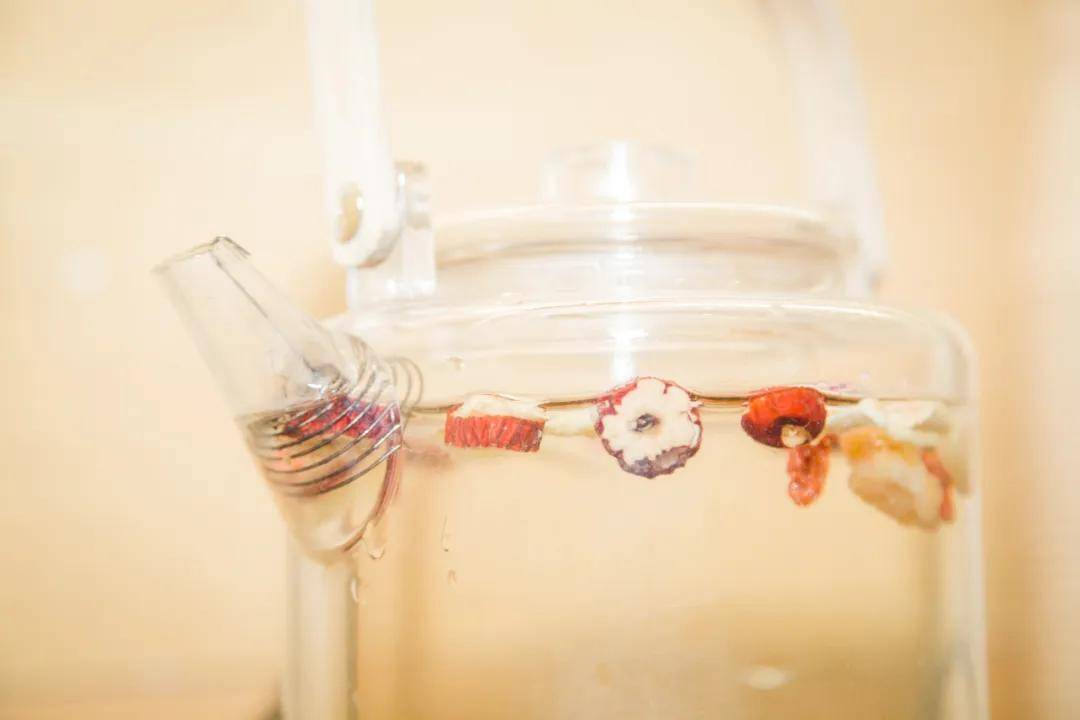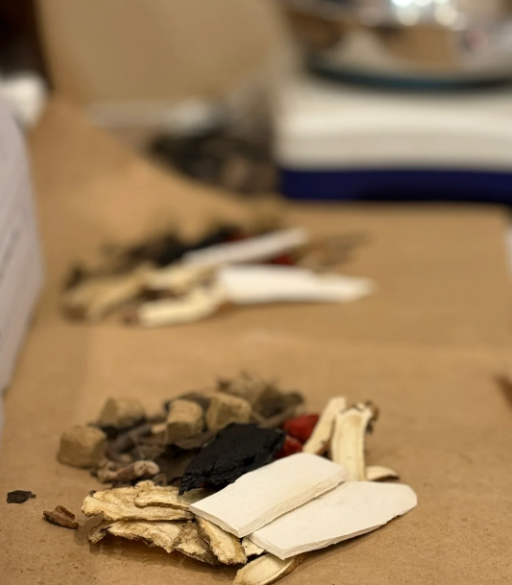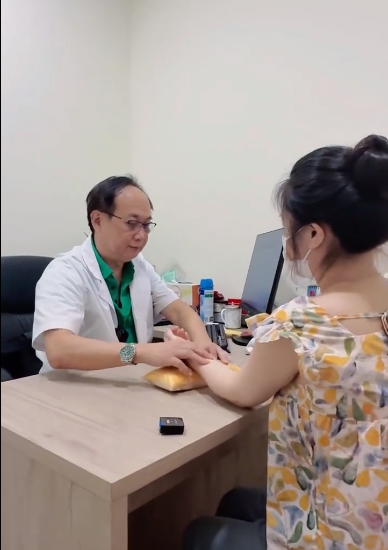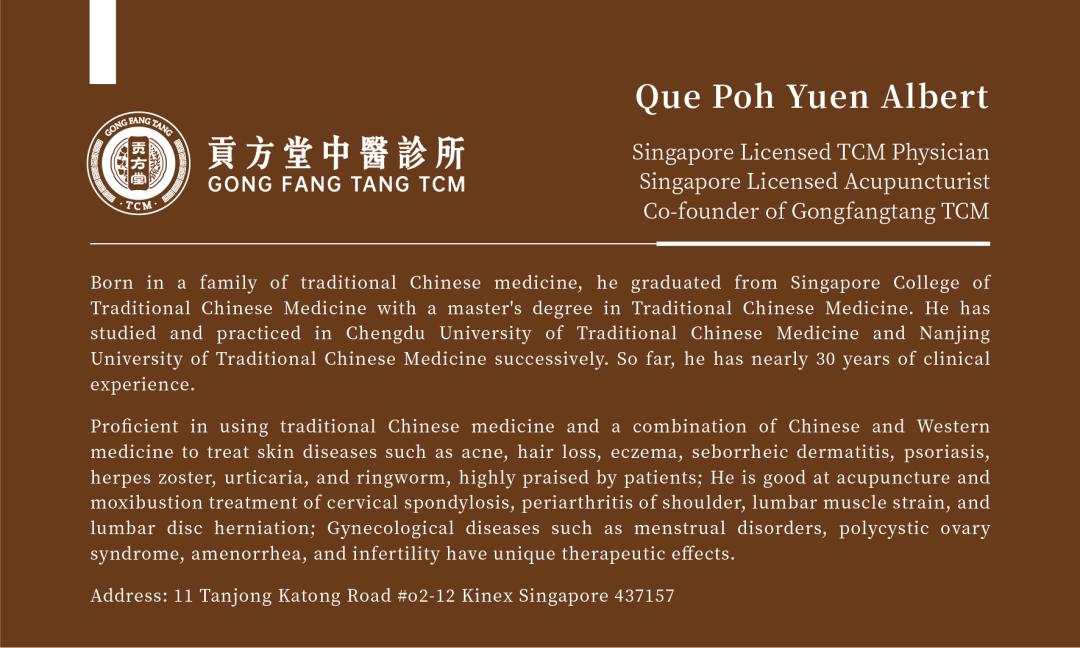During those few days every month, does your lower abdomen feel like it's plunged into an icy abyss or scorched by fire, drenched in cold sweat, forcing you to rely on painkillers to push through? Many women's first instinct is to gulp down brown sugar ginger tea. However, in Singapore's perpetually hot and humid climate, this approach might backfire! Dr. Que Poh Yuen Albert, a TCM Gynecology Specialist at Singapore's Gong Fang Tang TCM, points out: "Menstrual cramps also have cold and heat types. For those with a damp-heat constitution, drinking ginger tea is like adding fuel to the fire."

Why might brown sugar ginger tea "fail" in Singapore?
Dr. Que Poh Yuen Albert that Singapore's year-round heat and humidity, combined with a diet often high in sweetness and greasy foods, plus excessive consumption of cold drinks and air-conditioning, lead many women to develop a constitution characterized by "external dampness, internal heat, and blood stasis":
Internal Accumulation of Damp-Heat: Environmental dampness invades the body, combines with accumulated internal heat, and obstructs the flow of Qi and blood in the lower burner.
Internal Generation of Blood Stasis: Impaired Qi movement leads to obstructed blood flow. Menstrual blood becomes thick and clots; if discharge is obstructed, "obstruction causes pain."
The Ginger Tea Misconception: Brown sugar ginger tea has a pungent and warm nature. It is effective for cold-type menstrual cramps (aversion to cold, preference for warmth, dark menstrual blood). However, for the damp-heat and blood stasis type (burning pain, dark red and sticky menstrual blood, dry mouth with bitter taste, yellow vaginal discharge), the warming and tonifying ginger tea will fuel the internal damp-heat, worsening stasis and pain!
"Signal Lights" for Damp-Heat and Blood Stasis Type Menstrual Cramps (Quick Self-Check!)
Pain Quality: Burning, distending, or stabbing pain in the lower abdomen before or during menstruation, worse with pressure.
Menstrual Blood State: Dark red or deep purple color, thick and sticky consistency like paste, many dark-colored clots.
Accompanying Symptoms: Dry mouth with bitter taste, irritability, tendency to anger; profuse yellow vaginal discharge, thick and sticky with odor; dark yellow urine; sticky, difficult-to-pass stools.
Tongue Appearance: Tongue body slightly red, tongue coating yellow, thick, and greasy (especially at the root).

How does TCM effectively regulate menstrual cramps?
For the core pathogenesis of damp-heat and blood stasis type cramps, Dr. Que shares a classic formula: Taohong Siwu Decoction (Peach Kernel and Carthamus Four Substances Decoction). It clears damp-heat, transforms blood stasis, and stops severe pain!
Taohong Siwu Decoction consists of six herbs: Tao Ren (Peach Kernel), Hong Hua (Safflower), Dang Gui (Chinese Angelica), Chuan Xiong (Szechuan Lovage Root), Bai Shao (White Peony Root), and Shu Di Huang (Prepared Rehmannia Root). It is hailed as the "gold standard formula for activating blood and regulating menstruation."
In the formula:
Tao Ren and Hong Hua activate blood, transform stasis, and dredge the channels.
Dang Gui nourishes and supplements blood.
Chuan Xiong moves Qi and relieves depression.
Bai Shao soothes the liver and alleviates pain.
Shu Di Huang nourishes Yin and replenishes essence.
The synergistic action of these herbs both unblocks obstructed Qi and blood and supplements Qi and blood, improving menstrual cramps at its root.
Modifications for Effective Use:
Cold Coagulation and Blood Stasis: Add Ai Ye (Mugwort Leaf) and Xiao Hui Xiang (Fennel) to warm the channels and dissipate cold.
Liver Qi Stagnation: Add Xiang Fu (Cyperus Rhizome) and Chai Hu (Bupleurum Root) to soothe the liver and regulate Qi.
Qi and Blood Deficiency: Add Huang Qi (Astragalus Root) and Dang Shen (Codonopsis Root) to boost Qi and nourish blood.

Medical Case
Patient: Ms. Yang, 23 years old.
Chief Complaint: Lower abdominal pain before menstruation or several hours after its onset. Scanty menstrual flow, unsmooth discharge, followed by intense pain. Menstrual blood dark purple with clots; pain worsened when clots failed to discharge. Accompanied by palpitations, dizziness, blurred vision, and poor appetite. Severe pain frequently impacted work and life. Recurrent episodes for over two years. Had taken ibuprofen and anti-inflammatory painkillers; initially effective but later relapsed.
Symptoms: Heavy menstrual flow, purple color, sticky texture, clotted; abdominal pain and distension.
Initial Consultation: Tongue slightly red with yellow, thick, greasy coating; pulse wiry, slippery, and rapid.
Diagnosis: Primary dysmenorrhea.
Pattern: Blood stasis and obstruction.
Prescription: Modified Taohong Siwu Decoction.
Formula: Tao Ren (Peach Kernel), Dang Gui (Chinese Angelica), Chuan Xiong (Szechuan Lovage Root), Wu Yao (Lindera Root), Xiang Fu (Cyperus Rhizome), Yu Jin (Turmeric Tuber), Chai Hu (Bupleurum Root), Niu Xi (Achyranthes Root) - each 10g; Shu Di Huang (Prepared Rehmannia) 12g; Bai Shao (White Peony Root), Yan Hu Suo (Corydalis Rhizome) - each 15g; Hong Hua (Safflower), Zhi Gan Cao (Honey-fried Licorice) - each 6g. 7 doses. One dose daily, decocted in water, taken morning and evening.
Second Consultation: Slight dull pain before menstruation, not painful on pressure. Blood red and clear, without clots. Continued with modified formula for another 14 doses.
Result: No pain during the next menstrual period. Complexion became rosy.
